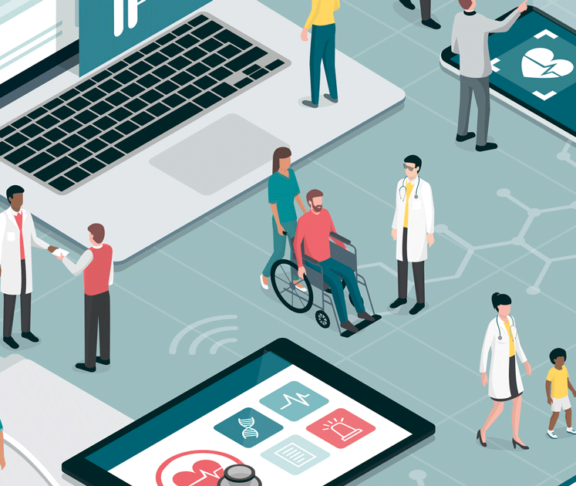
Rachel Power
Chief Executive, Patients Association and Chair of the Patient Coalition for AI, Data and Digital Tech in Health
Engaging with patients early in the healthcare tech innovation process can help ensure digital services work for those who use them.
Healthcare technology innovations have the potential to transform how patients receive care. That could be through greater efficiencies in diagnosing, treating and caring for patients or improving their access to care.
Discovering real needs
To be successful, patients’ needs must be at the forefront of the design process. People who use a service have the greatest insight into whether the design is appropriate and improves their diagnosis, treatment, care and overall quality of life. When patients are at the heart of technology innovation, there is a higher likelihood it will deliver services people need and will use.
Examples across the health and care system exist — where innovations make a real difference and offer best practice recommendations to minimise digital exclusion.
Providing a forum for input
The 100% Digital Leeds programme, led by a team in Leeds City Council, relies on its digital inclusion networks to provide a forum for different communities. Communities can then ensure their work draws on insights from these key groups of people, such as older people, to strengthen digital inclusion. The approach means people in care homes across the city can receive care and were able to keep in touch with their loved ones safely during the Covid-19 pandemic.
Healthcare technology innovations have the potential to transform how patients receive care.
Codesigning with users
Increasingly, codesign is becoming fundamental to the innovation process. For example, researchers at King’s College London have worked with more than 300 patients and families, clinicians and others to codesign medical devices for people with rare skin conditions. People previously relied on their own ingenuity to improvise solutions to manage their wounds. Now, they can codesign garments that give them greater mobility and save them time to get ready.
Making partnership standard practice
Working in partnership with patients and carers must become the standard practice in digital health technology if we want to see wider health benefits. Resources on how to do this effectively are available, such as the evidence-based guide ‘How to involve and engage patients in digital health tech innovation,’ developed by the University of Plymouth, in partnership with the Boehringer Ingelheim — the sponsor of the Patient Coalition for AI, Data and Digital Tech in Health — and Academic Health Science Networks.
Designing healthcare technologies with those who will use them can improve the experiences and outcomes of patients and those who care for them.

